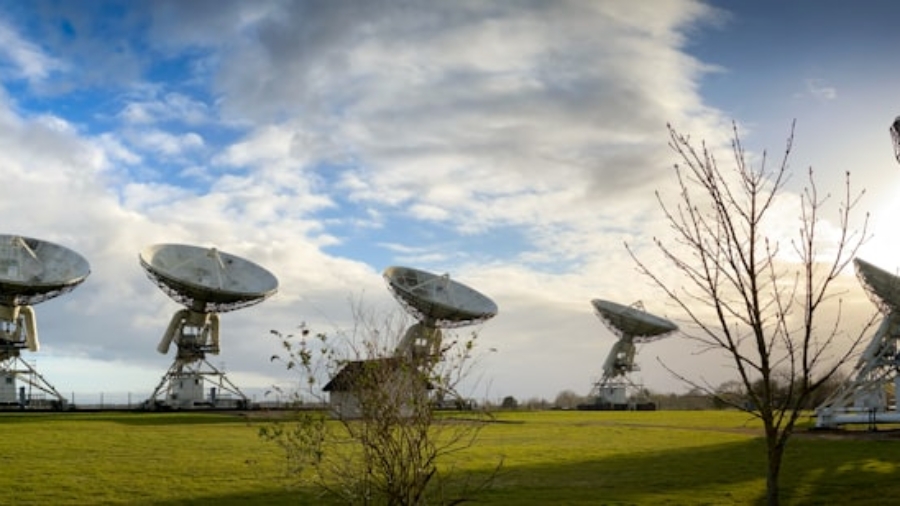Satellites have become an integral part of modern communication systems, serving as the backbone for various forms of wireless coverage. These artificial celestial bodies orbiting the Earth facilitate a range of services, from television broadcasting to internet connectivity. The advent of satellite technology has revolutionized how information is transmitted across vast distances, enabling seamless communication in ways that were previously unimaginable.
As the demand for reliable and widespread wireless coverage continues to grow, satellites play a crucial role in meeting these needs, particularly in areas where traditional infrastructure is lacking. The relationship between satellites and wireless coverage is multifaceted. Satellites can provide connectivity to remote and underserved regions, where terrestrial networks may be impractical or economically unfeasible.
By leveraging the unique vantage point of satellites in orbit, service providers can deliver high-speed internet and other communication services to users on the ground, regardless of their geographical location. This capability is particularly significant in an era where digital access is increasingly viewed as a fundamental right, underscoring the importance of satellite technology in bridging gaps in connectivity.
Key Takeaways
- Satellites play a crucial role in extending wireless coverage to remote and underserved areas.
- Satellite technology helps bridge the digital divide by providing internet access to regions with limited infrastructure.
- The impact of satellite technology on remote areas is significant, enabling communication, education, and healthcare services.
- Advancements in satellite communication are continuously improving wireless coverage and connectivity for users worldwide.
- Despite its benefits, satellite-based wireless coverage faces challenges and limitations such as latency and cost, which need to be addressed for future expansion.
The Importance of Satellites in Extending Wireless Networks
The role of satellites in extending wireless networks cannot be overstated. They serve as a critical link in the communication chain, enabling data transmission between ground stations and users across vast distances. This capability is especially vital in rural and remote areas where traditional wired infrastructure is either too costly or logistically challenging to implement.
For instance, satellite-based internet services can provide high-speed connectivity to communities that would otherwise remain isolated from the digital world, fostering economic development and social inclusion. Moreover, satellites enhance the resilience of wireless networks. In times of natural disasters or emergencies, terrestrial communication infrastructure can be severely compromised.
Satellites offer a reliable alternative, allowing emergency responders and affected communities to maintain communication when it is needed most. For example, during Hurricane Katrina in 2005, satellite phones were among the few means of communication available to rescue teams and survivors alike. This ability to provide uninterrupted service during crises highlights the indispensable role that satellites play in ensuring connectivity.
How Satellites Help Bridge the Digital Divide

The digital divide refers to the gap between those who have easy access to digital technology and those who do not. This divide often correlates with socioeconomic status, geographic location, and educational opportunities. Satellites are instrumental in bridging this divide by providing internet access to underserved populations around the globe.
By deploying satellite technology, service providers can reach individuals in remote areas who may lack access to traditional broadband services. For example, initiatives like SpaceX’s Starlink project aim to provide global internet coverage through a constellation of low Earth orbit (LEO) satellites. This ambitious project seeks to deliver high-speed internet to rural and underserved communities worldwide, effectively democratizing access to information and resources.
By reducing latency and increasing bandwidth, satellite internet can empower individuals with educational tools, telehealth services, and economic opportunities that were previously out of reach.
Satellite Technology and its Impact on Remote Areas
The impact of satellite technology on remote areas is profound and multifaceted.
For instance, indigenous communities in the Arctic have benefited from satellite internet services that enable them to connect with the outside world, access educational resources, and participate in telemedicine programs.
This connectivity not only enhances their quality of life but also preserves their cultural heritage by facilitating communication within their communities. Additionally, satellite technology has significant implications for industries operating in remote areas, such as agriculture, mining, and oil exploration. Farmers can utilize satellite imagery to monitor crop health and optimize resource management, leading to increased yields and sustainable practices.
Similarly, companies in the mining sector can leverage satellite data for exploration and environmental monitoring, ensuring compliance with regulations while minimizing their ecological footprint. The ability to harness satellite technology empowers these industries to operate more efficiently and responsibly in challenging environments.
Advancements in Satellite Communication for Improved Wireless Coverage
Recent advancements in satellite communication technology have further enhanced the capabilities of wireless coverage. The development of low Earth orbit (LEO) satellites has been a game-changer in this regard. Unlike traditional geostationary satellites that orbit at high altitudes and experience higher latency, LEO satellites operate at much lower altitudes, resulting in reduced signal delay and improved data transmission speeds.
This innovation has made satellite internet more competitive with terrestrial broadband options. Moreover, advancements in antenna technology have also contributed to improved wireless coverage. Phased array antennas allow for dynamic beamforming, enabling satellites to focus their signals on specific areas rather than broadcasting uniformly across vast regions.
This targeted approach enhances signal strength and quality for users on the ground, making satellite internet more reliable and efficient. As these technologies continue to evolve, they promise to further enhance the user experience and expand the reach of satellite-based wireless networks.
Challenges and Limitations of Satellite-based Wireless Coverage

Despite the numerous advantages of satellite-based wireless coverage, several challenges and limitations persist. One significant issue is the cost associated with deploying and maintaining satellite infrastructure. Launching satellites into orbit requires substantial financial investment, which can limit the number of providers willing to enter the market.
Additionally, the cost of satellite internet services can be prohibitive for low-income households, potentially perpetuating the digital divide rather than bridging it. Another challenge lies in signal interference caused by atmospheric conditions or physical obstructions such as buildings and trees. While advancements in technology have mitigated some of these issues, users in densely populated urban areas may still experience degraded service quality due to obstructions blocking line-of-sight signals.
Furthermore, regulatory hurdles can complicate the deployment of satellite services across different countries, as varying laws and policies may impact operations.
Future Prospects and Innovations in Satellite Technology for Wireless Expansion
The future of satellite technology holds immense promise for expanding wireless coverage globally. Innovations such as mega-constellations—large groups of satellites working together—are set to revolutionize how we think about connectivity. Companies like OneWeb and Amazon’s Project Kuiper are developing extensive networks of LEO satellites designed to provide high-speed internet access across the globe.
These initiatives aim not only to enhance connectivity but also to create a more competitive market that drives down costs for consumers. Additionally, advancements in artificial intelligence (AI) and machine learning are poised to optimize satellite operations further. AI algorithms can analyze data from satellites to predict demand patterns, optimize bandwidth allocation, and enhance network management.
This level of sophistication could lead to more efficient use of resources and improved service quality for users worldwide.
The Role of Satellites in Shaping the Future of Wireless Connectivity
As we look toward the future, it is clear that satellites will continue to play a pivotal role in shaping wireless connectivity across the globe. Their ability to provide reliable communication services in remote areas makes them indispensable in efforts to bridge the digital divide and promote inclusivity. With ongoing advancements in technology and increasing investment in satellite infrastructure, we can expect significant improvements in service quality and accessibility.
The potential for innovation within satellite technology is vast, promising a future where high-speed internet is available to even the most isolated communities. As we navigate an increasingly interconnected world, satellites will remain at the forefront of efforts to ensure that everyone has access to the digital resources necessary for education, economic growth, and social engagement. The journey toward universal connectivity is ongoing, but with satellites leading the way, we are one step closer to realizing this vision.
In the context of expanding wireless coverage through innovative technologies, it’s interesting to consider how various software solutions can enhance productivity in different fields. For instance, the article on the best software for tax preparers discusses tools that streamline workflows and improve accuracy, which can be crucial for professionals working in remote areas with limited connectivity. This highlights the importance of reliable wireless coverage in supporting various industries, including finance and accounting.
FAQs
What is the role of satellites in expanding wireless coverage?
Satellites play a crucial role in expanding wireless coverage by providing connectivity to remote and underserved areas where traditional infrastructure is not feasible.
How do satellites contribute to improving wireless connectivity?
Satellites enable wireless connectivity by relaying signals between ground-based transmitters and receivers, effectively extending coverage to areas that are difficult to reach with terrestrial infrastructure.
What are the benefits of using satellites for wireless coverage expansion?
Using satellites for wireless coverage expansion allows for global connectivity, reaching areas that are otherwise inaccessible. It also provides a cost-effective solution for connecting remote and rural communities.
What are some challenges associated with using satellites for wireless coverage expansion?
Challenges include the high cost of satellite technology, potential signal latency, and the need for specialized equipment to receive satellite signals.
How are satellites being utilized to bridge the digital divide?
Satellites are being used to bridge the digital divide by providing internet access to underserved and remote areas, helping to close the gap in connectivity and access to information and resources.

